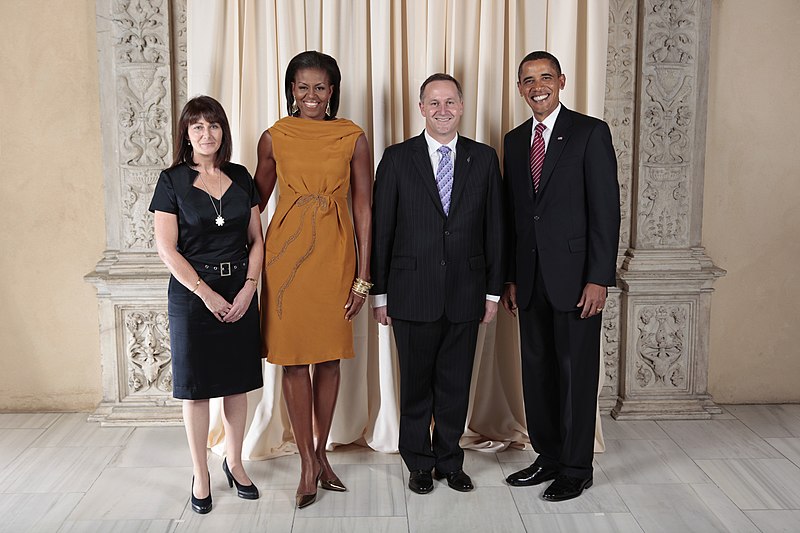
The once frosty relationship between the United States and New Zealand is warming rapidly. In its ‘pivot’ to the Asia-Pacific, Washington has rediscovered New Zealand as a potential strategic partner. An ever-closer relationship would boost US influence in the South Pacific and may help draw it further into regional governance and trade. However, Wellington’s other regional interests are likely to limit the amount of strategic cooperation that it is willing to pursue.
Then and Now
The Australian, New Zealand, United States Treaty (ANZUS) underpinned the post-war strategic relationship between the US and New Zealand. However, from the mid-1980s this relationship turned sour after New Zealand barred a US ship from visiting on grounds that it did not comply with the country’s nuclear-free arrangements. The ensuing diplomatic furor led to the US suspending its ANZUS obligations to New Zealand, restricting intelligence sharing and placing a ban on its navy from visiting American ports.
Much has changed since then, and New Zealand’s outreach to Washington, particularly through its deployment to Afghanistan, has not gone unnoticed. Last year saw the first signs of a return to strategic engagement with US Defense Secretary, Leon Panetta, and his counterpart, Jonathon Coleman, signing a commitment to closer defense cooperation. In his visit to New Zealand in September, Panetta lifted the ban on the NZ Navy and most of the restrictions placed on defense cooperation. However, full cooperation under ANZUS has not yet been restored.
A Relationship Built on Different Interests
The US has the most to gain from re-engagement with New Zealand. China, among other Asian powers, is actively courting the South Pacific island states and the US is now responding in kind. Last August, Hillary Clinton became the first Secretary of State to attend the Pacific Islands Forum, giving the clearest indication so far that Washington views the South Pacific as an important part of its strategic re-orientation. Stronger ties with New Zealand fall directly under this strategy. However, a closer relationship is also useful in a broader sense.
New Zealand has long had close political, economic and cultural links with the South Pacific island states. It is actively involved in development and governance programs in the region and two states – the Cook Islands and Niue – are in free association arrangements. The US hopes that strategic engagement with New Zealand will encourage Wellington to advocate a more pro-US line in its dealings with South Pacific states.
Yet New Zealand’s interests nevertheless differ from the United States. While it has a stake in regional stability, its location shields it from Asia’s strategic rivalries. Its need for strategic partnerships and defense guarantees is less than many US allies. This has allowed New Zealand to build a more independent foreign policy which Wellington views as an asset.
Limited defense cooperation complements its greater interest of incorporating the US into regional, particularly economic, initiatives. Trade is an important component of this strategy and John Key’s National Government is prioritizing this issue in 2013. While it would likely accept a US-New Zealand bilateral trade deal, Wellington’s first choice is to get the US into a regional free trade area, potentially by the end of this year. The proposed Trans-Pacific Partnership (TPP) would build on the current multilateral free trade association including New Zealand and a handful of Asia-Pacific countries. The US is in negotiations to join and New Zealand has shown considerable enthusiasm for bringing Washington on board. It is also hoped that US membership of the TPP will give New Zealand greater access to the world’s largest economy.
Wellington knows that brokering the US’ membership of the TPP will be a difficult task given that successive US administrations have faced significant domestic opposition in negotiating free trade agreements. New Zealand, along with other potential TPP states, needs to react positively to the US pivot so that free trade agreements can be ‘sold’ to the US public and, crucially, Congress. Wellington’s current rapprochement is part of this wider effort.
Full Steam Ahead?
It should be noted, however, that the recent bilateral commitments focus on relatively uncontroversial forms of defense cooperation and do not yet indicate a return to a fundamental strategic relationship. However, the US has little to lose by pushing the relationship further. Although New Zealand is a minor power, the US is looking to build partnerships with countries right across the Asia-Pacific. Washington’s enthusiasm is noticeable and it would almost certainly like to restore US-New Zealand ties under ANZUS. Panetta even expressed the desire to station US forces in a training capacity in New Zealand. This would be a significant step and leave little doubt that New Zealand is a US ally.
Yet, John Key’s government nevertheless remains cautious about a possible return to the ‘pre-1986’ alliance. Deeper defense cooperation raises serious questions about compatibility with Wellington’s other interests. New Zealand has, for instance, invested heavily in developing commercial ties with China – its second largest trading partner – and values its strong links with the states of the South Pacific. Accordingly, the current incomplete US partnership serves New Zealand well – it allows for good relations without creating anxiety in Asia and the South Pacific. Getting too close to the US could compromise its image as an independent actor, its main unique selling feature.
Wellington must decide how much of a strategic relationship it wants by weighing up the costs and benefits of upgrading from a ‘friend’ to an ‘ally’. In the absence of a strategic imperative, growing economic links with East Asia and a strong relationship with the South Pacific, New Zealand would be risking a lot in doing so.
For additional reading on this topic please see:
Part of the Pivot? The Washington Declaration and US-NZ Relations
Australia and New Zealand in the World
The Trans-Pacific Partnership Agreement
For more information on issues and events that shape our world please visit the ISN’s featured editorial content and Security Watch.

